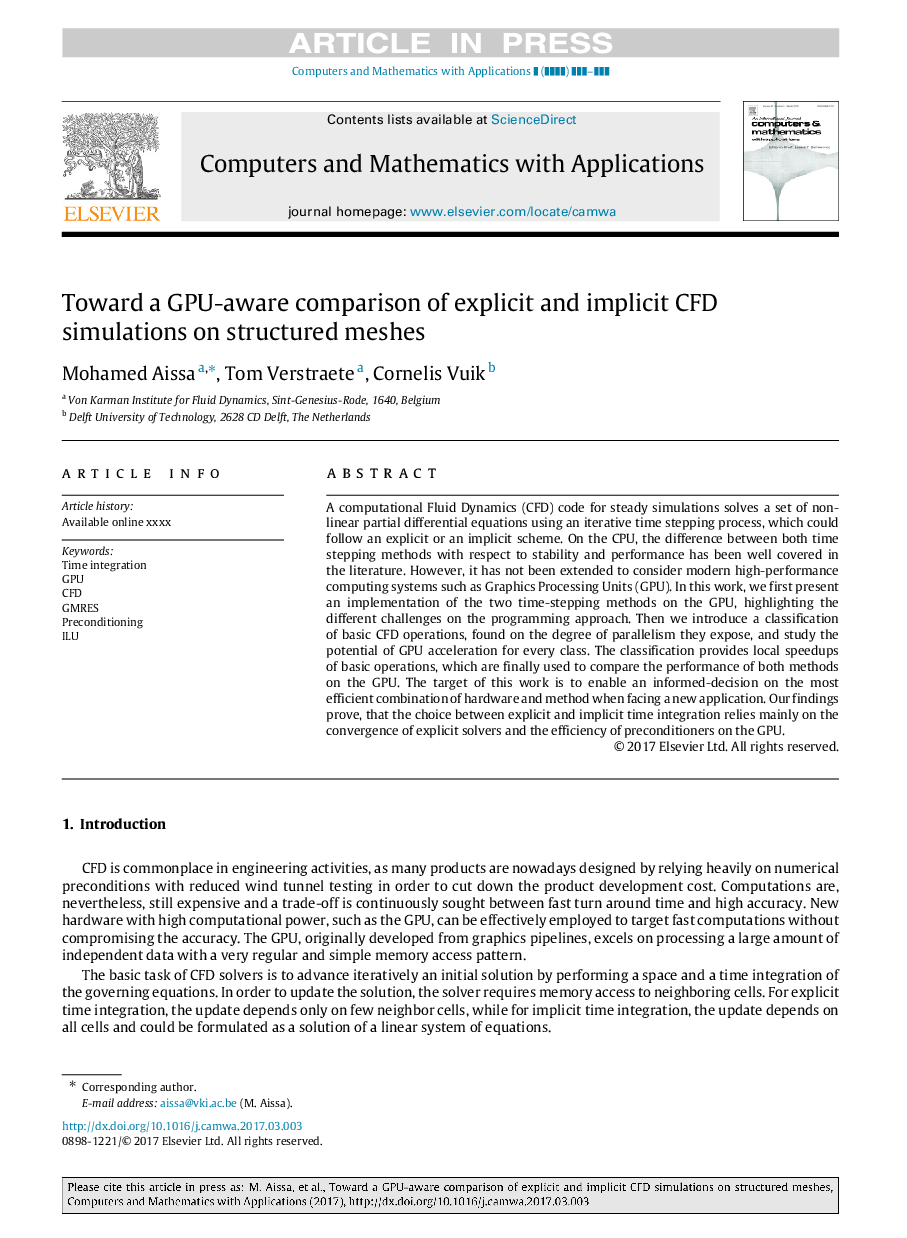| Article ID | Journal | Published Year | Pages | File Type |
|---|---|---|---|---|
| 4958435 | Computers & Mathematics with Applications | 2017 | 17 Pages |
Abstract
A computational Fluid Dynamics (CFD) code for steady simulations solves a set of non-linear partial differential equations using an iterative time stepping process, which could follow an explicit or an implicit scheme. On the CPU, the difference between both time stepping methods with respect to stability and performance has been well covered in the literature. However, it has not been extended to consider modern high-performance computing systems such as Graphics Processing Units (GPU). In this work, we first present an implementation of the two time-stepping methods on the GPU, highlighting the different challenges on the programming approach. Then we introduce a classification of basic CFD operations, found on the degree of parallelism they expose, and study the potential of GPU acceleration for every class. The classification provides local speedups of basic operations, which are finally used to compare the performance of both methods on the GPU. The target of this work is to enable an informed-decision on the most efficient combination of hardware and method when facing a new application. Our findings prove, that the choice between explicit and implicit time integration relies mainly on the convergence of explicit solvers and the efficiency of preconditioners on the GPU.
Related Topics
Physical Sciences and Engineering
Computer Science
Computer Science (General)
Authors
Mohamed Aissa, Tom Verstraete, Cornelis Vuik,
